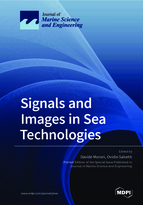Signals and Images in Sea Technologies
A special issue of Journal of Marine Science and Engineering (ISSN 2077-1312). This special issue belongs to the section "Ocean Engineering".
Deadline for manuscript submissions: closed (1 August 2020) | Viewed by 19216
Special Issue Editors
Interests: computational intelligence and intelligent systems; artificial intelligence; computer vision; multimedia information processing; signal processing; assistive technologies; interactive systems and augmented reality
Special Issues, Collections and Topics in MDPI journals
Interests: image analysis and understanding; multimedia information systems; spatial modeling and intelligent processes in computer vision and information technology; sea technologies and applications
Special Issues, Collections and Topics in MDPI journals
Special Issue Information
Dear Colleagues,
This Special Issue includes papers that aim at combining technology and scientific research related to the sea with the typical standards of the Information and Communication Technologies (ICT) domain.
Generally, the sectors of ICT have been combined with the scientific and technological research activities on the sea for some time now, and they are related, among others, to the fields of:
- Sensors for environmental monitoring (physical–chemical parameters, marine pollution, eutrophication ecotoxicology);
- Submarine robotics (AUV—autonomous underwater vehicles, ROV—remotely operated vehicles, etc.);
- Monitoring of sea geomorphology, maritime activities, and navigation using remote sensors (radar/optical/satellite instruments) mounted on satellites, coastal structures, flying platforms (aircraft–helicopters), and ships;
- Coastal oceanography, for the measurement of wave motion and coastal erosion and related sensors;
- Development of imaging techniques for underwater mapping, underwater archeology, submarine research, and structural monitoring and inspections;
- Development of mathematical, hydrofluid dynamic models for oceanography and related sensors;
- Physical oceanographic and submarine geophysics;
- Marine biology and aquaculture;
- Marine meteorology and study of the sea–atmosphere interface;
- Climate changes and related monitoring;
- Study of the anthropic impact on the marine environment.
This relation derives from an approach that moves from so-called ocean engineering (study of applied engineering techniques to the scientific disciplines inherent in seas and oceans) towards ICT requirements.
In our case, this Special Issue intends to investigate the reverse path, i.e., to exploit the techniques and the ICT approaches, and in particular the study and application of signal- and image-based methods, and to explore the advantages of their application to the areas mentioned above.
In particular, this Special Issue seeks original contributions that address and discuss the impact and relevance of signals and images treatment and processing in R&D areas such as:
- Oceanographic engineering;
- Sensor and marine monitoring;
- Marine robotics;
- Optical and acoustic image analysis;
- Virtual and augmented reality for sea investigation;
- Human–sea interaction.
In addition to the abovementioned topics, innovative and breakthrough contributions based on the convergence of signal and image processing, analysis, and understanding in any challenging sea application are welcome.
Dr. Davide Moroni
Dr. Ovidio Salvetti
Guest Editors
Manuscript Submission Information
Manuscripts should be submitted online at www.mdpi.com by registering and logging in to this website. Once you are registered, click here to go to the submission form. Manuscripts can be submitted until the deadline. All submissions that pass pre-check are peer-reviewed. Accepted papers will be published continuously in the journal (as soon as accepted) and will be listed together on the special issue website. Research articles, review articles as well as short communications are invited. For planned papers, a title and short abstract (about 100 words) can be sent to the Editorial Office for announcement on this website.
Submitted manuscripts should not have been published previously, nor be under consideration for publication elsewhere (except conference proceedings papers). All manuscripts are thoroughly refereed through a single-blind peer-review process. A guide for authors and other relevant information for submission of manuscripts is available on the Instructions for Authors page. Journal of Marine Science and Engineering is an international peer-reviewed open access monthly journal published by MDPI.
Please visit the Instructions for Authors page before submitting a manuscript. The Article Processing Charge (APC) for publication in this open access journal is 2600 CHF (Swiss Francs). Submitted papers should be well formatted and use good English. Authors may use MDPI's English editing service prior to publication or during author revisions.
Keywords
- Optical and acoustic image analysis
- Multimodal sensor data processing
- Multidimensional signal processing and analysis
- Sensor data fusion
- Sensor networks and communication aspects
- Multispectral and hyperspectral imaging
- Patter recognition and machine learning methods







